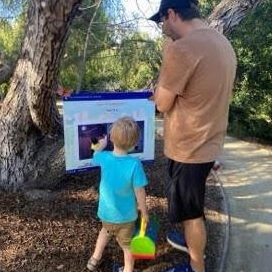The UNFCCC Paris Agreement to combat climate change requires commitment and action towards a sustainable, low carbon future. The target set was to limit global warming to 1.5°C – and we are only 0.4°C away. Global carbon emissions peaked in 2019 but have already dropped down this year due to limited air travel and other factors. While the circumstances that brought about these changes are less than ideal, it is a start and hopefully lays the foundation for sustained reductions.
The future climate is in our hands – our actions now will decide that future. Energy production remains the primary driver of greenhouse gas emissions, followed by agriculture, forestry and other land uses, then industry and transport. According to climate scientist Professor David Karoly, countries in the Southern Hemisphere are expected to experience the largest economic impacts of global warming, and it is therefore imperative that Australia takes leadership and responsibility for making change.
According to Dr Tyson Yunkaporta, we live in a ‘Dynamic Universe – because of the diversity within it.’ Tyson belongs to the Apalech Clan in far north Queensland and is a senior lecturer in Indigenous Knowledges at Deakin University. Indigenous knowledge is a dialogue – it’s the yarns, carvings, songs, and dances that change depending on the relationship of the people who are sharing it, where they are, and where they are from. With so many cultures, stories, and points of view, stories of the sky change according to where you stand. ‘Truth is not an empirical thing, but an aggregate of stories and diversity.’ What Westerners call a meteor represents the eye of an evil spirit or death to many Aboriginal groups across northern Australia. Cultural astronomer A/Prof Duane Hamacher has felt privileged to learn how meteors and meteorites are incorporated into Indigenous knowledge systems by Aboriginal and Torres Strait Islander elders around Australia.
We spent long periods shrouded in smoke due to the 2019-2020 bushfires that burned upwards of 12 million hectares. In addition to the tragic loss of life and devastation to ecosystems and infrastructure, there were significant levels of smoke exposure across Australia. The lives lost as a direct result are likely to number in the hundreds. Approximately 10 million people experienced elevated concentrations of fine particles on account of the recent fires, exposed to an air quality equivalent to smoking between 20 to 40 cigarettes. These ultrafine particles, less than 2.5 micrometres in diameter (a ninth of a grain of sand), are referred to as PM2.5 particles. Following the 2009 Black Saturday bushfires, the Victorian Bushfires Royal Commission recommended that 5% of public land should be burned annually to reduce the risk of catastrophic bushfires. While protective against large, uncontrollable bushfires, these prescribed burns produce smoke that can have a significant impact on health.
The energy we obtain from burning coal today comes from the energy that prehistoric vegetation absorbed from the Sun millions of years ago. But it instead only takes microseconds to convert sunlight directly into electricity. Global electricity consumption continues to accelerate with economic growth and industrial demand. Around 23 trillion kilowatt hours of energy were consumed in the single year of 2018 – the equivalent power needed to turn on 1,800 billion LED bulbs for an hour. To provide our growing population with the level of energy the developed world is used to, we would need to generate 60 trillion kilowatts worldwide. Power plants as we know them cannot satisfy these demands; however, the sunlight energy striking the Earth’s surface in an area the size of Texas alone could provide up to 300 times the total power output of all the power plants in the world. “Solar energy has the greatest potential to fill this energy gap,” says Dr Wallace Wong.
In accordance with the Rules of the Society, financial Members of the Royal Society of Victoria Inc. may vote in person or by proxy. Rule 21 (1) requires notice of the appointment of a proxy, who is a member of the Society, to be given or sent to the Honorary Secretary at the Society’s Office no later than 5.00 pm on Wednesday 13th May 2020, the last working day before the meeting, which will be held at 5:00 pm on Thursday 14th May 2020 online as a Zoom conference.






